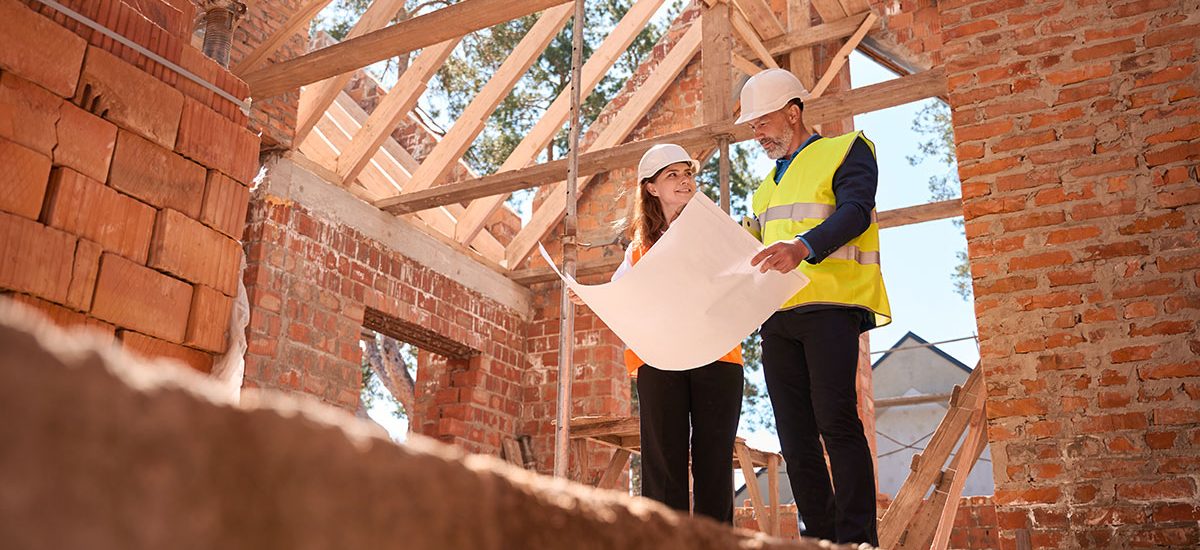Do you believe our children, our grandchildren, will thank us, or will blame us, because of the way we construct today?
Have you ever sat and stared at the house and streets in your city and asked yourself, what will all this,
be like in 10 years?
There is a revolution in the construction sector. The construction industry has long been regarded as one of the greatest contributors to pollution and high energy waste, tons of raw material used, as well as a huge carbon footprint.
However, the situation is beginning to change. The role of builders, architects, and developers is
rethinking everything today. Whether in terms of their materials, the way buildings are built and
powered, construction is entering a new age, one that is all about sustainability, innovation, and a long-term impact. So, there is a lot of buzz these days about how the construction industry is going greener and greener.
Need of sustainable growth in the construction industry:
Sustainable growth deals with the fact that the economic growth should be balanced with the
environment and social morals. It entails the implementation of innovative, sustainable practices,
technologies, and materials that would ensure the minor impact the industry has on the environment and at the same time drive the economic growth and social well-being.
Sustainable growth in the construction industry can hardly be overestimated. In an age when the
worldwide population is increasing and becoming more urbanized, the new buildings, infrastructure,
and other constructions will only go higher in demand. In case of carrying out the business as usual, the consequences of the industry to the environment can be devastating, such as the depletion of
resources, greenhouse gases, and waste production.
New concepts that result in sustainable construction:
1. Green construction Materials:
Reuse of materials like recycling green building materials, low-carbon concrete, and sustainable wood materials are gaining popularity in the construction sector. Not only do these materials have less impact on the environment, but they tend to be more insulated, long-lasting and aesthetically versatile.
2. Energy-Efficient Design:
Sustainable building design is largely an accepted tradition in the development process with architects and constructors installing aspects of nature light and insulation, renewable energy mechanisms in the design of their buildings. New buildings often strive to achieve such standards as LEED, BREEAM, or WELL in order to save energy and maintain the comfort of people.
3. Sustainable Infrastructure:
Environmentally friendly construction, especially green roofs, rain gardens, and permeable pavement, are being installed to minimize storm water runoff and enhance the quality of the environment.
4. Digital Technologies:
Today some Digital technologies are used such as BIM and virtual reality that plays an important role in advancing the design, construction, and operation of environmentally sustainable buildings.
Problems and Opportunities Although the construction industry has taken several positive steps on implementing sustainable ways,
it still has a number of challenges and opportunities to deal with. Some of these challenges are:
Budget and affordability:
Some builders and developers may be unable to meet sustainable construction practices since they may be costly compared to the usual construction practice, and some construction materials may be costly.
Training problem :
There are few builders, developers and policymakers who have information and training on sustainable practices in construction and the advantages.
Rules and standards:
Building codes and regulatory frameworks may exert an obstacle to uptake of sustainable construction. In spite of these problems, the construction sector has great potential to go green and decrease its environmental impact.
Demand of green buildings:
Consumers are demanding sustainable buildings and this is pushed by government regulations, and
corporate sustainability programs.
Modern technologies:
New opportunities are being created by developing new technologies to allow mainstreaming
sustainable construction, i.e. building-integrated photovoltaic and green roofs.
Funding opportunity:
The sustainable construction projects are beginning to get funding opportunities through emergent categories of green financing instruments including green bonds and impact investing.
Conclusion:
Creating a Sustainable Future:
With the construction industry changing, it is clear that the future of the planet is dependent on the
industry. A sustainable approach, therefore, is one way we can achieve this by ensuring that the built
environment is green not only because it reduces pollution and wastes, but it also facilitates economic development and improvement of social life.


